Before we start looking at various diseases from the Victorian era, it will be useful to put it in perspective to the modern world, post the advent of modern medicine. Various aspects to look at are:
- Life expectancy
- Reasons for illnesses
- Childbirth
- Mental illness
- Condition of hospitals
- Sanitation
What was the life expectancy then and now?
During Victorian times, Middle-class men were expected to live to about 45 and workmen and labourers maybe around half of that time. Children reaching the age of 5 were lucky, due to lack of vaccination. Current life expectancy in Britain is around 80, and going up.

The ‘bad air’ (miasma) theory
It was a common belief that diseases are caused by bad smells. Since poor districts had a bad smelling air and a high date compared to rich suburbs with no smells and so no disease.
‘Great Stink’ of 1858: the Thames was flowing with undiluted sewage caused parliamentarians to worry since the foul smell itself might kill the MPs in their debating chamber overlooking the river.
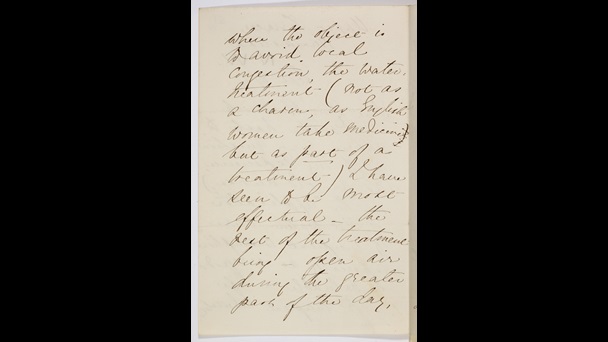
Florence Nightingale believed in the miasma theory. Her success in Crimean War hospitals must have reinforced that belief since she insisted that bad smells must be eradicated by a thorough cleaning.
Contraception and childbirth
The main method of limiting family was the withdrawal. Otherwise, women would get pregnant one after the other. Contraception advice was available and condoms could be bought, but only ‘under the counter’.
Birth of a child was risky and painful. There was a general belief that labour pain was imposed by God because Eve had sinned in the Garden of Eden. Dr. Snow, the same person who discovered the source of cholera, invented use of chloroform to alleviate labour pains. After it was used by Queen Victoria and the daughter of the Archbishop of Canterbury, anesthesia became respectable.
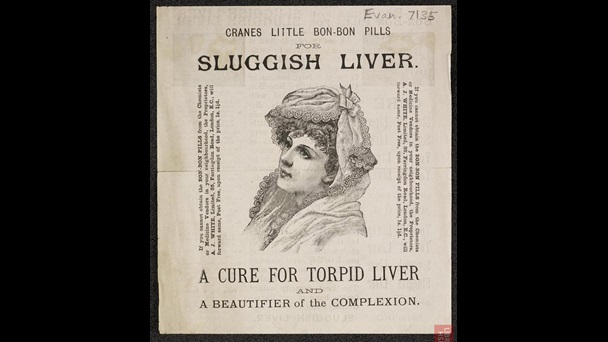
View on Mental illness
There was a complete lack of awareness about mental illnesses or disorders. Also read about eating disorders.. Also read about eating disorders.. County Asylums were the place to lock up the poor sufferers. There were ‘madhouses’ of private nature which were often profitable institutions. Husbands would lock away their wife if he disapproved of her behaviour. The Woman in White by Wilkie Collins proves used this dramatic aspect in this fictional story.
Hospitals
The Victorian hospital scene was not too bad. St Thomas’s, a medieval foundation in London, moved to make way for a railway line. Its new location was next to the Thames, where the air quality was better, due to the new drainage system by Bazalgette.
Florence Nightingale influenced designs of several hospitals and used open balconies and airy wards, to counteract any hospital-generated miasma (foul smell).
Since middle classes could afford care, they looked down upon the reliance on quacks and their medicines by the poor. Vendors on the street sold medicines on a ‘no cure, no pay’ basis. A fashionable person practicing quackery could make a good living from his tricks.
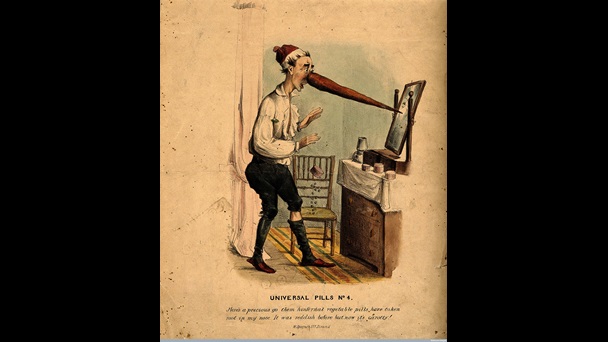
John St. John Long claimed consumption could be cured by liniment and medicated vapours. He was charged with manslaughter in Old Bailey but still continued his business. With an income of £13,000, fine was not a big problem. The irony is, he died at the age of 36 – of consumption.
There were several advertisements for questionable remedies in the press. Kaye’s Worsdell’s Pills were claimed to be ‘the best medicine since it could be under any circumstance, as they needed no restriction of diet, and their timely use cures all complaints’.
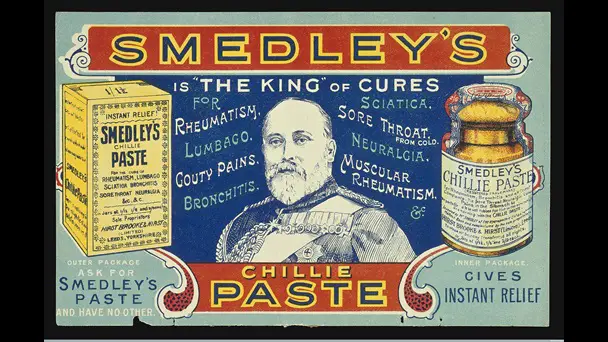
Which were the common illnesses during the Victorian era?
Cholera, Typhoid, Scarlet fever, and Smallpox were the most common diseases. Diseases like typhus and influenza killed a large number of people.
Victorian diseases: Cholera
The first outbreak of Asiatic cholera in Britain was at Sunderland during the autumn of 1831. There was a terrible epidemic of cholera between 1832 and 1853. Dr. John Snow took much time to convince the establishment that cholera is a water-borne disease in 1854: and not because of bad smells.
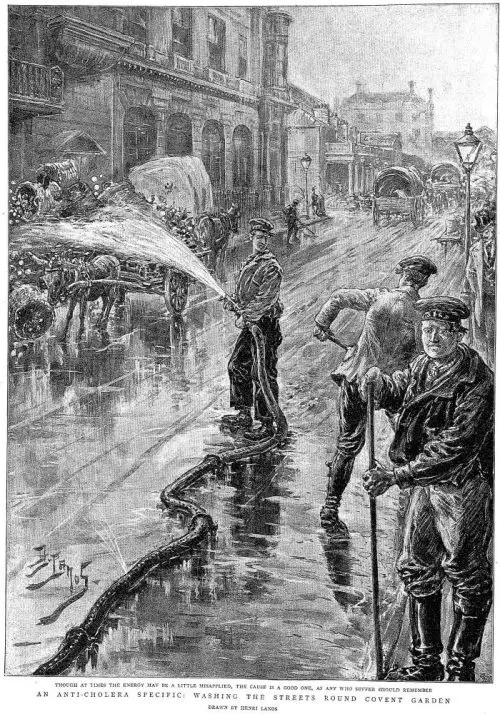
Cholera was a dreadful disease as its consequences were terrible. It was caused by the use of contaminated drinking water. Nausea, dizziness, vomiting, diarrhea, overwhelming thirst, cramps were the popular symptoms. Death followed within 24 hours of the first symptom. It was estimated that in 1848, 2000 was the weekly death rate in England due to this disease.
Even in modern world cholera is still prevalent so it will be unfair to blame the Victorians, who had no clue caused it. Over the next century, the whole world saw millions of people falling prey to this disease.
While the Victorians were sure that it is somehow linked to the human waste, lot of scientists thought it was the smell of open sewers in Victorian London which was spreading the disease. The idea of microbiology was very new, so it took 30 years for his finding to be widely accepted. Even after so many years, it still exists.
Sexually transmitted diseases
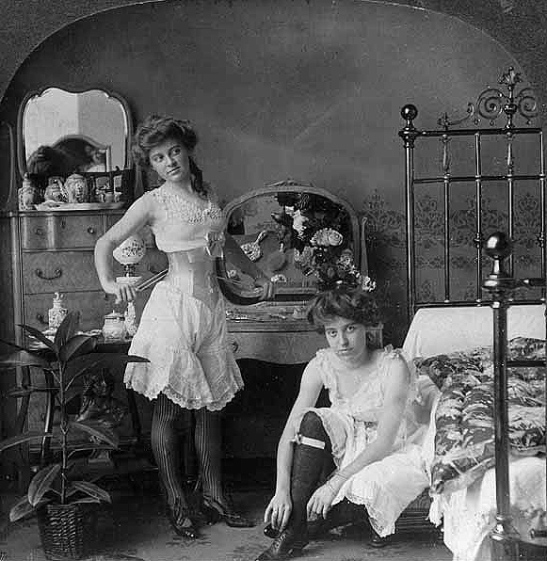
Prostitutes in slums caught the sexually transmitted disease syphilis and spread it via their clients to their wives. There was no remedy for syphilis, although sometimes mercury was used. From 1864 ‘known prostitutes’ working near ports and garrisons, found to have STDs, could be forcibly detained and treated. Public objected resulting in the law to be repealed after 10 years.
Children’s diseases
Most upper-class ladies did not breastfeed their children. Immune systems of the babies lacked the benefits of their mother’s milk. Victorian nurseries were plagued by childhood diseases – measles, mumps, diphtheria, scarlet fever, rubella – which, thankfully no longer exist or preventable.
Victorian employers had little awareness about keeping their employees safe. The floral wallpapers and the leaves on fashionable hats, could kill the workers due to contact with the arsenic in the green dye. There was long held suspicion by the French that the British poisoned Napoleon in his prison on St Helena, by decorating his bedroom with green patterned wallpaper. Arsenic was all over the house, in the bathroom, to remove superfluous hair, in the garden to kill rats, in the kitchen to kill flies.
Scarlet fever in Victorian era
Scarlet fever was a horrible disease during the 19th and 20th centuries. This disease features in many of the novels of Charles Dickens. Another disease was the formation of a thick membrane in children’s throat which made them unable to breathe. It was Diphtheria.
Sir Alexander Fleming discovered penicillin, which saved children dying of scarlet fever. With the invention, they would just have a sore throat, diarrhea, and a rash, and get better quickly. However, there was a news that in 2011, 2 people died in Hong Kong after contracting a strain of scarlet fever that has evolved a tolerance to certain antibiotics.
Smallpox
Smallpox was a grave disease in the beginning. But after Edward Jenner in the 1790s invented the vaccine, smallpox began to be a less difficult disease. Typhus fever was endemic in London and epidemics occurred in all towns in 1817-1819, 1826-1827 and 1831-1832.
It’s been only 34 years since smallpox has been eradication from the planet. Once upon a time, it used to kill 400,000 in Europe per year, and was the cause of a third of all human blindness.
Tuberculosis
Consumption was the tuberculosis of the lungs. Weaknesses, fatigue, wasting away, blood in the lungs were the symptoms of this disease. It was very difficult to treat this disease. It killed hundreds of people in the nineteenth century in England. People infected were sent to a sanatorium.
Typhoid
Typhus, distinct from Typhoid was spread by body lice and dirty conditions. Delirium, headaches, rash and high fever were the possible symptoms.
We have still not seen the back of this disease. Basic awareness about cleanliness, washing hands after use of toilet and before preparation of food, sterilization of medical equipment, is actually a relatively recent invention.
Before microbes and germs were discovered, there were so many conflicting theories about causes of diseases that you could be upto some totally different cure but catch typhoid from someone who used water from a well next to a sewer. Not keeping yourself clean would pass it on to others as well.
Measles, mumps, and rubella
There’s one famous jab in current times, and it effectively stops these terrible diseases. Immunization program in the UK combines these 3 together. It is rather surprising that the take-up rates for the MMR vaccine have dropped over the last 10 years, possibly mainly due it’s “claimed” link to autism by Andrew Wakefield’s discredited claim.
Diphtheria
Diphtheria was a highly contagious, common childhood disease. Symptoms were the formation of a thick gray membrane in a child’s throat making him difficult to breathe. Growth was frequently accompanied by Fever and weakness and several times end result was death.
Diphtheria- the strangling angel of children: An account of the diphtheria disease, its impact, and treatments.

A german, Robert Koch, invented that the disease is caused by the “bacillus” bacteria. The bacteria flowing through the bloodstream would damage cells in the heart. Two medical students took the results of Koch’s experiments and successfully developed an “antitoxin” to both prevent and cure the disease.
Poliomyelitis
Poliomyelitis which primarily affects children, attacks the spinal cord and brain, resulting in the child finding his limbs paralyzed after waking up. Bed rest was the only way to help in lessening the effects of the disease. It was in 1952 that an American
doctor, Jonas Salk developed a vaccine for the prevention of the disease.
Self-medication
An attack of a toothache was treated with Chloroform. Morphia, or laudanum, another derivative of opium were other options. Chemists would sell them without any questions.
Advancement in medicine
Florence Nightingale changed nurses into highly trained professionals. The medical profession established examining and disciplinary bodies providing recognised qualifications. Medical knowledge significantly improved. The death rate from post-operative shock and ‘hospital gangrene’ reduced dramatically, since the operations were performed on an anesthetised patient, in an operating theatre disinfected with carbolic, by a surgeon who had washed his hands in carbolic.
See also:
Victorian Era Doctors-Medical Practitioners
Medicine and Public Health during the Victorian Era
Medical science discoveries started to improve lives of people.